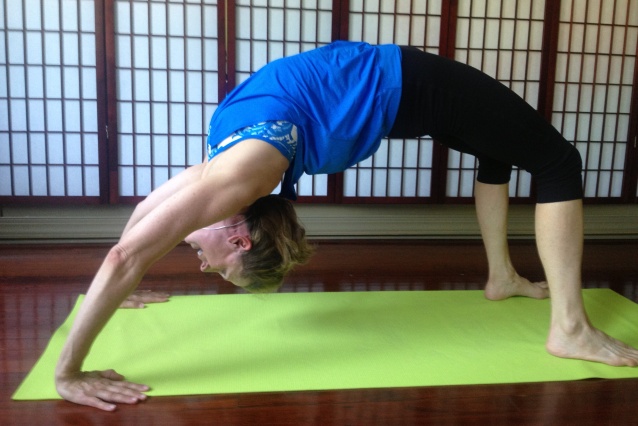Today in class we were talking about how muscles work. In the language of anatomy there are different names for what the muscles do. When you have a muscle that contracts and moves a body part it is called the agonist or prime mover, the antagonist works against the prime mover and the synergists are muscles that work with the prime mover and help it.
Straighten Your Leg
We were talking about Pascimottanasana, or Seated Forward Fold. In this pose, the quadriceps are the prime mover. They straighten the leg and this causes the hamstrings, the antagonist to the quads, to stretch. This is a concept called reciprocal inhibition which means that when one muscles contracts, it signals the brain to tell the antagonistic muscle to relax in order to be stretched.
But a lot of students miss out on this stretch because they cheat and bend their knees as they fold forward.* This makes them feel as if they are stretching further because their face is in their shins, but they are not getting the full benefit of the pose. As best as you can, press the back of the knees into the floor while keeping the heels down. It is the pressing down of the back of the knees that engages the quads and signals the hamstrings to stretch. Keeping the heels down prevents hyper-extending the knees.
Use Your Arms
The other aspect of this forward fold are the synergistic muscles, these are the muscles that help you fold deeper. In the case of Pascimottanasana, contracting the psoas, a deep hip flexor, helps to tip the pelvis forward. And finally holding the outside of your feet and bending your elbow to engage the biceps helps to pull you forward and deeper into the pose. This is not an aggressive pull, but a gentle pull which helps bring the torso out over the thighs.
Give this a try over a few weeks ad see if it doesn’t help improve your hamstring flexibility.
*(Of course if you have really tight hamstrings you may need to bend your knees as you fold forward to make sure that you are hingeing at the hips and not rounding in the lumbar spine. This is the sort of thing that is best assessed by your teacher.)










